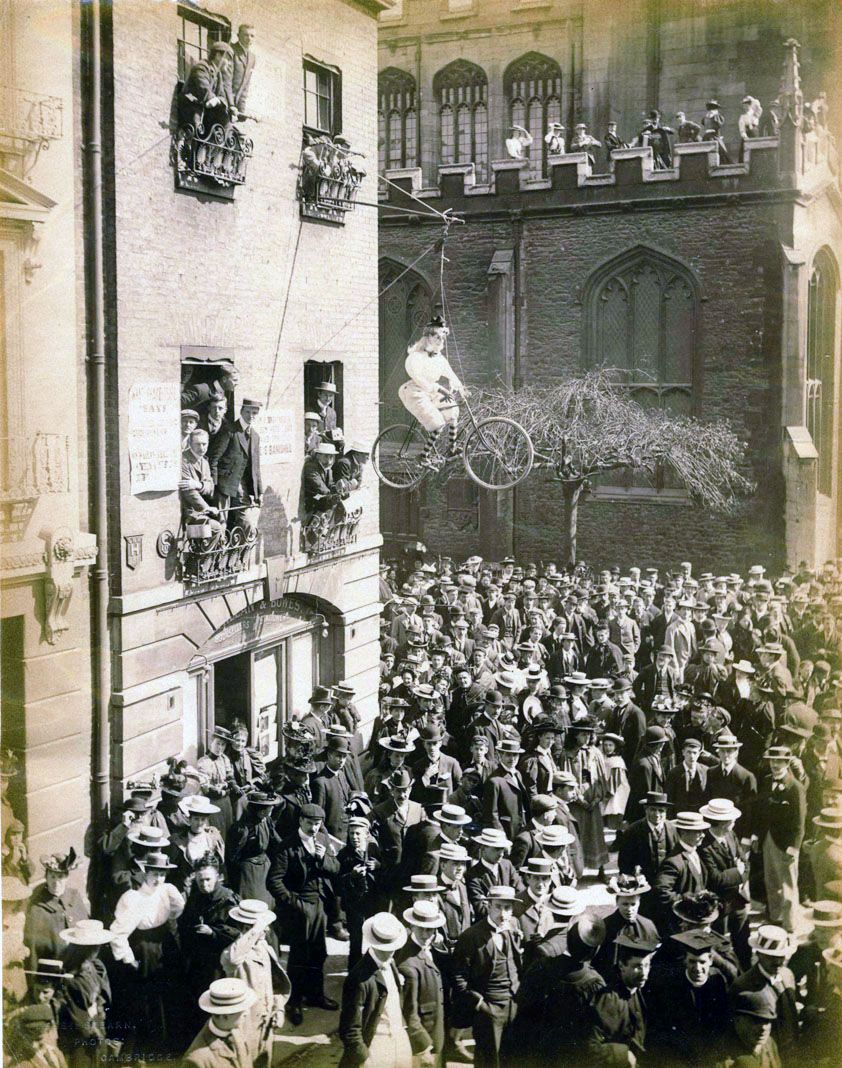Killing Your Darlings (Part one)
Writing the Bicycle Clip Diaries took me on lots of journeys.
Spending so much time with old bicycle catalogues got me interested the idea of how liberating cycling was for everyone, but particularly women.
I looked into the relationship between transport, cycling, gender, and clothing. I spent weeks with the literature surrounding the topic of 'ladies' bicycles'.
I learnt about rational dress, how cycle specific clothing liberated women, to a degree, from dresses which restricted movement.
I started to write a chapter, fat tyres is a feminist issue, which ended up being 20, 000 words long. It linked with outsider cyclists today, like the biker gangs of LA who hold an event called 'clitoral mass'.
I started to explore the difference between the bicycle Victoria Pendleton actually rides, and those which bear her name in Halfords. Baskets, being one of them. I read her autobiography. I spoke to a to a couple of amazing bicycle historians on the topic of women's bicycles
Eventually I realised that this this wasn't really part of my story. And it has been told well by others. To cover it in a cursory manner wouldn't have worked. So the chapter never made the cut. But here's a bit of what I left out:
"Safe, relatively cheap, mass-produced bicycles to us may seem boringly commonplace to us, but they liberated everybody in their wake and scared the authority figures at the time. The bicycle was a disruptive technology.
We can safely assume that it changed the gene pool for the better, as from now on you didn’t have to marry the available idiot in your village, you had your pick of available idiots from all the surrounding villages. Revolutionaries of all types loved the freedom of the bicycle: socialists, nature lovers, suffragettes. Needless to say, it changed patterns of employment for a wide range of people, and not just butchers.
There was an inevitable backlash. The sheer volume of vitriol against bicycling was pretty remarkable, and the various pamphlets, opinion pieces, cartoons, and ditties which criticise the bicycle craze seems to predate the negativity of the certain sections of the bottom half of the Internet now. How change averse and scared people seem, how negative. And willing to use fake science and spurious interpretations of religious texts in order to justify the idea that this new thing, the ability to propel yourself forward using your own steam, was a bad thing.
Given that our current consensus is that exercise and fresh air are a good thing, it seems odd that so many in the medical profession were against bikes. But it was country folk too, the wealthy and even gangs of ruffians who would apparently string up rope to knock the these faddish cyclists off their bikes ‘diabolical devices of the demon of darkness’, as one Daily Mail web article of the time pointed out.*
Women got it worst obviously; with their fragile nervous systems and propensity to hysteria and wombs which could be damaged by most things. ‘Cycling would destroy the sweet simplicity of her girlish nature’ apparently, and worst of all women might develop a ‘bicycle face’ from too much riding. An 1891 Sunday Herald writer said that ‘the most vicious thing he ever saw was a woman on a bicycle’, knocking smoking off the top spot.
Women on bicycles neglect their duties, and run over men whilst flashing their bare bottoms in cartoons: needless to say they are generally bad at riding their bicycles, often pictured wobbling hopelessly all over the road, but they generally get their comeuppance through falling off spectacularly.
It would be comical were it not for the sympathy you feel for these long dead and hopelessly stifled early riders. But they did not give up. As mass-production made them relatively cheap, from the 1890s onwards, the bicycle was synonymous with the suffragettes.
By the 1890s some well-off middle class women were cycling to class at Cambridge University and in 1897 a proposal was put before the University’s Senate to grant full degrees to female graduates.
Did male students responded with courtesy, realising that the addition of women would improve knowledge base? Did they realise that all subjects could benefit from an increased diversity of attendees? And that denying education to certain groups would only reinforce the inequality which holds us all back?
Perhaps some did. But the vocal majority made signs which read things like ‘No Gowns for Girtonites’ and ‘Varsity for Men’. You can't help thinking of the all male Bullingdon Club - and therefore David Cameron, George Osborne, Boris Johnson. People whose absolute sense of privilege has been drummed into them.
Some of these charming young men were so scared of women getting an education, that they hung up this effigy of a suffragette. Then they tore ‘her’ up and chopped off ‘her’ head.
The effigy of the woman is riding a bicycle."
I can lose myself in this photograph, imagining the conversations and the lives of the people in it, especially the women in the bottom left of the picture. What did they say to the men? They look feisty, and strong. What battles did they fight?

(image source: Princeton Graphic Arts Collection it's old enough to be out of copyright so can be freely distributed)
